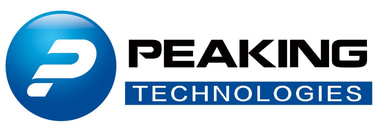From 1 to 10,000: Why Manufacturing Is the Secret Sauce Behind Great Design
Elon Musk’s approach to manufacturing—emphasizing scalable, affordable, repeatable production as a core design constraint—offers a blueprint for any company aiming to move beyond pilots and prototypes into reliable, high-volume reality.
JoeZ
11/7/20255 min read


Design is the spark. Manufacturing is the engine. For hardware-centric businesses—from IoT gadgets to industrial machinery to aerospace components—the leap from a single functional prototype to a scalable, repeatable production line is where most products either fail or flourish. Elon Musk’s approach to manufacturing—emphasizing scalable, affordable, repeatable production as a core design constraint—offers a blueprint for any company aiming to move beyond pilots and prototypes into reliable, high-volume reality. This article unpacks Musk’s philosophy, translates it into actionable practices for manufacturing service providers, and shows how teams can operationalize design-for-manufacturing (DFM) thinking to turn “one unit that works” into “ten thousand that don’t fail.”
The core paradox: Design and manufacturing are interdependent
Design determines the product’s function, performance, and user experience.
Manufacturing determines what it costs to deliver that experience at scale, how reliably it can be produced, and how quickly it can iterates in response to market feedback.
The harsh truth: a dazzling design that can’t be produced at target cost and yield is not a viable product. The reverse is also true: efficient manufacturing without ambitious design goals risks delivering mediocre products.
To create durable products, you must embed manufacturing realities into design decisions from day one. That means iterating not only on features but on tolerances, materials, assembly sequences, testability, and supply-chain constraints — before you commit to a production plan.
The 1-to-10,000 delta: Why production systems demand 100x to 10,000x more effort than product design
Prototyping shows feasibility; production system design proves viability.
The production line is a complex orchestration of tooling, process parameters, quality controls, supply-chain reliability, and factory floor logistics.
The cost of failure scales dramatically in high-volume runs: a small design flaw can multiply into thousands of faulty units, expensive recalls, or costly rework.
Key implication for manufacturing service providers: early investment in process development, capability planning, and pilot-to-production transfer is not optional—it's core to delivering customer value. Build capability maps that anticipate scale, not just the first run.

Learning from competing approaches: bespoke prototypes vs. disciplined production
Bespoke prototypes prioritize speed and uniqueness; they may tolerate variability and long lead times.
Real production lines insist on standardization, repeatability, and continuous improvement (kaizen) to meet cost, time, and quality targets.
For service providers, the goal is to help clients transition from “one-off” to “repeatable and scalable” without sacrificing performance. This requires:
Robust design-for-manufacturing (DFM) practices.
Early engagement with manufacturing partners and supply-chain constraints.
A staged ramp plan that aligns design readiness with process readiness.
Translating Musk’s ethos to a practical framework for service providers
Adopt a three-layer framework: Design, Process, and Scale.
Design layer: Integrate manufacturability as an explicit design constraint.
Material choices: select materials that meet performance while offering reliable supply and ease of processing.
Tolerances and fixtures: set design tolerances that are achievable with existing tooling and predictable in mass production.
Modularity: design components to be modular, easing assembly, testing, and replacement.
Testability: embed test points, self-test capabilities, and in-line inspection to detect defects early.
Process layer: codify the manufacturing process as an evolving system.
Process mapping: detail every step from raw material to finished unit, including cycle times, yield targets, and scrap rates.
Automation strategy: identify where automation adds value and where it’s unnecessary, balancing capital expenditure with throughput gains.
Quality controls: implement statistical process control (SPC), poka-yoke (mistake-proofing), and automated data capture.
Supply-chain resilience: map critical parts, alternative suppliers, and true cost of disruption.
Scale layer: plan for volume, repeatability, and continuous improvement.
Production-ready bill of materials and process documents.
Pilot production with defined success criteria before full-scale launch.
Lean ramp-up: gradually increase batch sizes while monitoring quality, yield learning, and process stability.
Post-launch feedback loop: establish rapid channels for field data to inform design and process refinements.
Practical playbooks for different product families
A. IoT devices
Design considerations
Simplify PCB routing to minimize assembly steps.
Use modular enclosures that allow easy wiring and thermal management.
Favor standardized interfaces and connectors for supply-chain flexibility.
Manufacturing playbook
Pilot with high-mlex test rigs to validate wireless performance and battery life at scale.
Establish automated soldering and conformal coating processes with robust tape-and-reel handling.
Implement in-line functional testing that simulates real-world usage.
B. Industrial machinery components
Design considerations
Prioritize standard fasteners and off-the-shelf components to reduce sourcing risk.
Build in assembly fixtures and jigs that ensure repeatability.
Include deterministic maintenance indicators and serviceability features.
Manufacturing playbook
Invest in precision machining strategies that optimize tool life and cycle times.
Create a robust supplier quality program (SQP) with clear acceptance criteria and incoming inspection.
Implement modular subassemblies to ease aftermarket support and upgrades.
C. Aerospace-like components (non-flight-critical)
Design considerations
Weight distribution and thermal management are still critical; use aerospace-grade but cost-conscious materials where feasible.
Design parts for testing and traceability: unique serials, lot tracing, and test data capture.
Manufacturing playbook
Leverage high-precision machining and surface finishing with repeatable processes.
Enforce stringent quality metrics and documentation to meet regulatory expectations.
Build a disciplined change management process to control deviations.
Case studies: translating Musk’s philosophy into real-world success
Case Study A: Turning a prototype IoT gateway into a scalable product
Challenge: Prototype demonstrated functionality but suffered from inconsistent solder joints and inconsistent wireless performance at volume.
Approach: Introduced DFM workshops early, redesigned enclosure for automated assembly, standardized internal cable routing, and implemented SPC on critical solder joints.
Outcome: 40% reduction in unit cost, 3x faster assembly line throughput, and 99.3% first-pass yield in pilot.
Case Study B: Scaling a modular industrial sensor
Challenge: Custom components with long lead times limited production speed.
Approach: Standardized modular subassemblies, negotiated multi-source supplier agreements, and deployed automated visual inspection for each module.
Outcome: Reduced lead times by 50%, achieved stable supply with two primary vendors per critical part, and improved field reliability through consistent QA.
Case Study C: From bespoke to batch production in a small aerospace-like part
Challenge: Custom, one-off production,每 unit required extensive testing and bespoke fixtures.
Approach: Reengineered to use common tooling, created universal test rigs, and implemented a production-ready BOM with traceability.
Outcome: Turned a multi-month lead-time process into a weekly cadence production, with traceable QA data for customers.
The market reality: why scale is not optional
Customer expectations: shorter product cycles, cheaper units, and higher reliability.
Competitive dynamics: global supply chains, price pressure, and rapid iteration cycles.
Economic reality: the cost of the first production line is amortized across tens of thousands of units; early misalignment costs compound quickly.
For manufacturing service providers, the message is clear: your value isn’t just making one product; it’s delivering a repeatable, high-quality, scalable production system that unlocks a product’s true market potential.
Building a playbook for your services
Early manufacturing engagement: involve your manufacturing team in the design phase to flag potential production risks and costs.
Clear phase gates: define what constitutes “design locked,” “process qualified,” and “production ready.”
Transparent cost modeling: provide a realistic cost trajectory from pilot to full scale, including tooling, setup, and unit costs at target volumes.
Comprehensive validation: require both functional and production validation, including environmental and reliability testing aligned with customer use cases.
Continuous improvement loop: collect production data, feed it back to design, and implement iterative improvements.
The leadership mindset: culture that values manufacturing as a strategic asset
Hire for manufacturing literacy: engineers who understand both design and production realities.
Reward cross-functional collaboration: design, process, and supply-chain teams work together from the start.
Invest in capability building: tooling, automation, and data analytics that enable rapid, repeatable production.
A closing perspective: designing with scale in mind, manufacturing with intent
In today’s hardware economy, designing a great product is not enough. The true differentiator is the ability to manufacture it at scale—affordably, reliably, and rapidly. Adopting Musk’s core insight—manufacturing is underrated, design is overrated—can transform how you position yourself as a manufacturing service provider. By embedding production realities into design decisions, building rigorous process architectures, and planning for a scalable ramp, you help clients move from a successful prototype to a thriving, high-volume product line.
